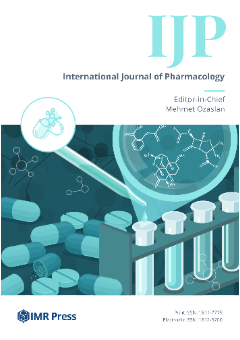International Journal of Pharmacology (IJP) is published by IMR Press from Volume 21 Issue 4 (2025). Previous articles were published by another publisher under the CC-BY licence, and they are hosted by IMR Press on imrpress.com as a courtesy and upon agreement.
Moderation of Immunopathological Parameters by Pravastatin in Pasteurella multocida (Pm52) Induced Septicaemic Mice
Gram negative sepsis and septic shock are among the leading causes of death, both in humans and animals. Statins, 3-hydroxy-3-methylglutaryl coenzyme (HMG-CoA) reductase inhibitors are said to have immune modulating effects. In the present study, it was hypothesized that amelioration of hyper immune activation by pravastatin can improve the immunoapthological status of acute sepsis. Pasteurella multocida Pm52 strain was used as a source of Lipopolysaccharide (LPS) and the pathogenic organism for induction of septicaemia in mice. In vitro trials showed that LPS extracted from P. multocida stimulated Nitric Oxide (NO) production in time and dose dependent manner in Mouse Embryonic Fibroblast (MEF) cultures. Addition of pravastatin to MEF culture supernatant significantly reduced Pm52 LPS induced NO production (p<0.05). In vivo studies showed that administration of pravastatin in combination with cefotaxime to P. multocida induced septicaemic mice significantly increased both mean survival time and survivability percentage compared to antibiotic and pravastatin treatments regimes. Furthermore, the serum TNF-α : IL-10 levels were significantly improved and near to normal healthy ratios in septicaemic mice treated with pravastatin+cefotaxime combination at 24 h post infection. Gross and histopathological findings revealed moderate lesion in pravastatin treated mice as compared to untreated and cefotaxime alone treated groups. The findings conclude that pravastatin stabilizes the immune compromised status of the septicaemic animals during early septic stages by stabilising the NO production, regulating the TNF-α: IL-10 ratio and reducing histopathological lesions. Although the mortality was not prevented, the immunopathological signs were ameliorated to a greater extent by this new treatment combination, further investigations are suggested to explore its possible therapeutic utility against sepsis and for septicaemic patients.

